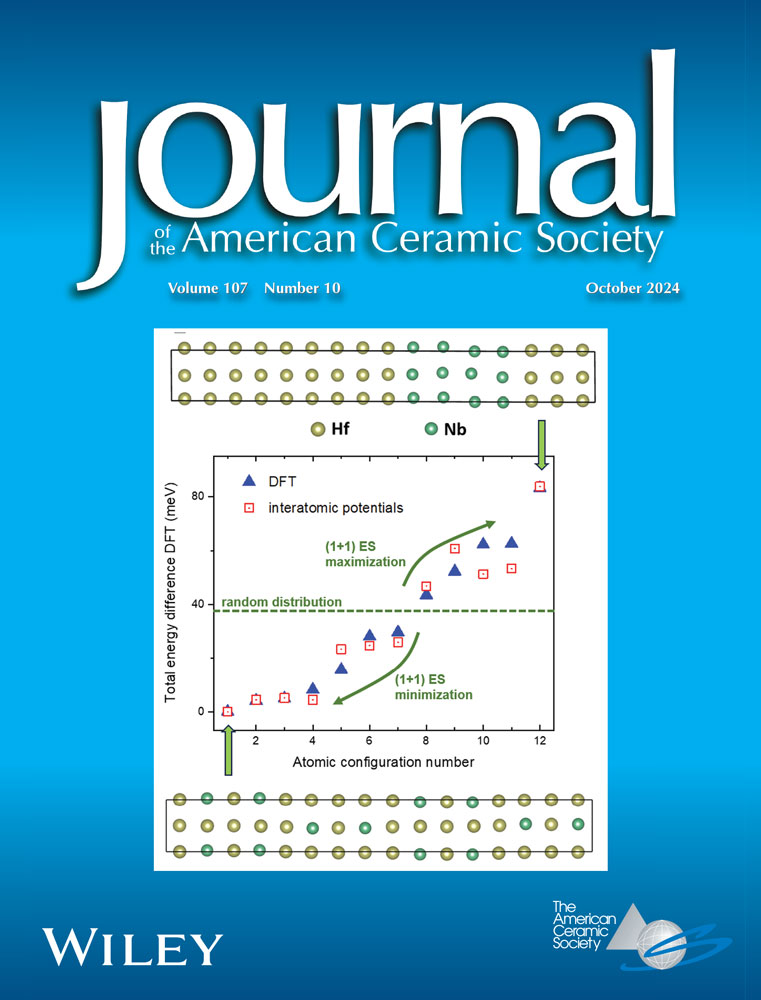氨等离子体退火过程中氧化钛的掺杂
IF 3.8
3区 材料科学
Q1 MATERIALS SCIENCE, CERAMICS
引用次数: 0
摘要
本文研究了氧化钛膜在氨等离子体中的掺杂。结果表明,仅靠气体放电是不够的。有必要将衬底温度提高到至少550°C,这与等离子体处理过程中氨扩散到薄膜中有关。气体放电功率越大,等离子体温度越高,热解速率越快。在衬底表面附近,氮浓度和掺杂概率增加。氮的含量增加,并渗入氧化钛。本文章由计算机程序翻译,如有差异,请以英文原文为准。

Doping of titanium oxide during annealing in ammonia plasma
This paper studies the doping of titanium oxide films in ammonia plasma. It is shown that gas discharge alone is not enough for doping. It is necessary to increase the substrate temperature to at least 550°C, which is associated with the diffusion of ammonia into the film during plasma processing. Increasing the gas discharge power increases the plasma temperature and increases the pyrolysis rate. The nitrogen concentration and the probability of doping increase near the substrate surface. The amount of nitrogen increases, which penetrates into titanium oxide.
求助全文
通过发布文献求助,成功后即可免费获取论文全文。
去求助
来源期刊

Journal of the American Ceramic Society
工程技术-材料科学:硅酸盐
CiteScore
7.50
自引率
7.70%
发文量
590
审稿时长
2.1 months
期刊介绍:
The Journal of the American Ceramic Society contains records of original research that provide insight into or describe the science of ceramic and glass materials and composites based on ceramics and glasses. These papers include reports on discovery, characterization, and analysis of new inorganic, non-metallic materials; synthesis methods; phase relationships; processing approaches; microstructure-property relationships; and functionalities. Of great interest are works that support understanding founded on fundamental principles using experimental, theoretical, or computational methods or combinations of those approaches. All the published papers must be of enduring value and relevant to the science of ceramics and glasses or composites based on those materials.
Papers on fundamental ceramic and glass science are welcome including those in the following areas:
Enabling materials for grand challenges[...]
Materials design, selection, synthesis and processing methods[...]
Characterization of compositions, structures, defects, and properties along with new methods [...]
Mechanisms, Theory, Modeling, and Simulation[...]
JACerS accepts submissions of full-length Articles reporting original research, in-depth Feature Articles, Reviews of the state-of-the-art with compelling analysis, and Rapid Communications which are short papers with sufficient novelty or impact to justify swift publication.
 求助内容:
求助内容: 应助结果提醒方式:
应助结果提醒方式:


